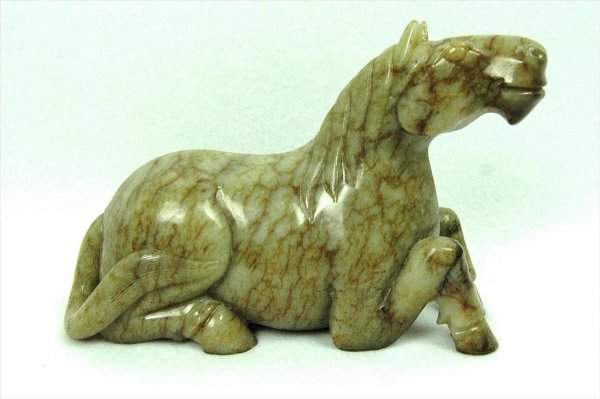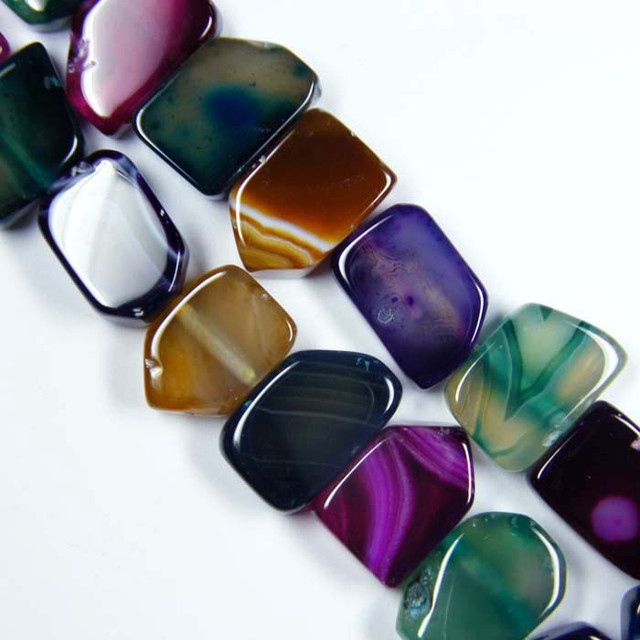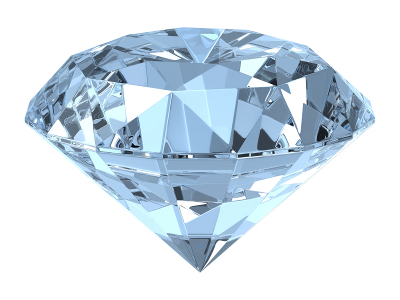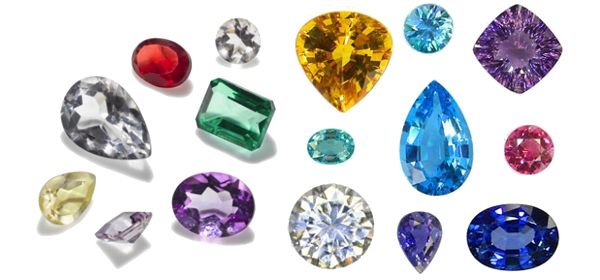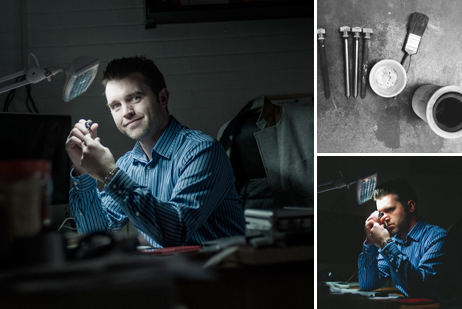For over 7,000 years Jade has been precious to the Chinese, in a way that gold and diamonds have had an attraction to the Western culture but it goes way beyond that.
Not one of the hardest of stones, it is one of the toughest, and has a special beauty and translucence, which the Chinese have associated with power. It was greatly revered by the Chinese of high standing, who wore amulets, to show their position and importance. These would often hang from the belt and knock against each other, making a pleasant noise like a wind chime. When they met another person of higher rank, they would silence their Jade as a sign of deference.
All the old Jade in China is Nephrite and because of it’s toughness, it was ground away and polished rather than cut, using abrasive sands, worked with bamboo or rope. This took a considerable amount of time, and this toughness is the reason the carvings have endured over the centuries, still with a gleam to them. Many aristocratic families would be buried with many pieces of Jade. Some of their time, and others much older, as Antique Jade was collected and treasured through the ages.
The uses and types of carving vary greatly, but with all pieces, the Chinese carved them with a meaning, every animal and being has particular attributes which are special to them.
Wonderful works created so painstakingly are available for collection. Amulets and belt slides, worn hundreds of years ago and the translucence of the stone remains as beautiful now as when they were originally made. Rubbing a hand over the Jade, raises the sheen, and because it is such a tactile stone, it becomes a habit, almost a ritual.
Jade has long been used as a personal protector, as well as the specific meanings of the subject carved, and it is always greatly admired.
Buying Antique Jade on eBay
Buying antique jade on eBay, especially those pieces coming from China is a losing proposition if you want real antique jade. The majority of what is being sold out of China is in fact, modern and, in many cases, not even jade. One easy way to figure out what is what is to look at the carving in the picture; antique jade has smooth lines, more fluid in flow, this was because it was carved by hand and the person took the time to make it artistic.
Modern reproductions are obvious when you look at curved lines because they are jagged in many cases, this is because modern tools were used, tools that jump up and down as they cut and the carver did not have the time or expertise to smooth them out. Also when you see what looks like dirt rubbed into the cut lines, this should be a warning that the piece was “aged” to look old, as if it had been buried. Additionally, many subjects purporting to be old simply are not Chinese in origin. Probably the biggest giveaway would be the fact that you realistically cannot have dozens of exactly the same antique piece. The last clue is price, as connosieurs of jade culurally, the Chinese would not sell 18th Century jade for a few dollars, if anything, they are not stupid.
Frequently Asked Questions About Buying Chinese Jade Antiques
ByProf. Mitchell Chen, certified appaiser
We receive many good questions about purchasing jade antiques, especially over the internet. Here are some answers that we hope can shed light to your jade antique buying experience:
Q. Is it legal to purchase or sell jade artifacts?“
A.Yes, jade artifacts may be sold or purchased legally when the artifacts are not on the government’s wanted lists of stolen jade antiques.
Q. Are jade artifacts are controlled by the Chinese government?
A. Jade artifacts that are on the inventory of Chinese museums, or remain unearthed in the Chinese territory, or are in the process of unearthing are indeed controlled by the Chinese government.
Q. There are so many sites, and museums and private parties, and seems you can purchase the antiques off the Internet. How is this possible?
A. Private collections are permissible for selling even in in Chinese territory. There are many auction houses there to perform artifacts transaction for commercial selling purposes.
Q. Can I assume any of the jade artifacts on ebay are real?“
A. No. you cannot. To be safe, you probably should assume a cautious position on jade artifacts being sold on the internet. Most of the time the sellers themselves do not have the knowledge to indentify whether an artifact is genuine.
Q. Are all the Chinese artifacts will be returned to the country?
A. Not if the jade artifacts are not listed by the government as stolen items. As a matter of fact, most of the artifacts in the museums outside China are the bounties of war during the Qing dynasty.
Q. Can you purchase and own Chinese jade artifacts?
A. Yes. if the artifacts are not on government’s “wanted” list of stolen goods.
Q. From whom can you legally buy jades from, Can jade artificats be purchased overseas into the United States?
A. Yes. If the jade artifacts are purchased legally.
Q. It is known that China & Taiwan are the origins of fake jades , can jade artificats be purchased in the US or Europe be safer?
A. Not necessary. If the jade artifacts dealers or collectors are not professional enough, they may acquire some fake jades. On the contrary, if you know how to identify jade yourself or if you have qualified expert examined before you buy, you have equal chance to obtain genuine jade.In other words, place of purchase is not the factor to determine whether it is genuine or not.
Q. Is anyone on eBay selling authentic artifacts?
A. We are sure there are authentic pieces of jade artifacts being sold on Internet stores. To be on the safe side, one would want to have basic knowledge of jade identification. We’ve provided some helpful information on jade identification in our website for jade lovers and visitors who are seriously considering collecting and purchasing jade antiques and artifacts.
Q. When you say modern jade, what time frame are you talking? 1950′s, 1900′s?? 1990′s?
A.There is no definite time frame. Usually when the item has age less than 100 years will be considered modern. In China, when open market system has been adopted, jade collection and fake jades prevail in the past 20 years. More over, when electrical powered tools start to be used, the carving styles will be quite different from those using manual tools. As a result, jades made in the these period will be considered MODERN.
Q. How to distinguish Ming imitation jades from real Han or Warring States jades?
A.The Ming imitation jades will have the same form of those of the WS or Han, therefore the difference will not base on the motifs form but on the the lining carving style of the motifs.
How to Authenticate Jade Artifacts Without Unearth Report?
It is believed that the quantity of jade artifacts without unearth report is far greater than those of with unearth report. As a result, to authenticate jade artifacts without unearth report is more important than to authenticate those with unearth report as well as is more difficult. Fortunately, modern technologies are available to make jade artifacts authentication as accurate as possible. Among them, reference method may be one the jade authentication methods which seems to be appropriate.
The reference method may be described as follows: Firstly, we select a referral jade artifact with unearth report which was designated as a particular period such Han Dynasty.
Secondly, we list all the referral item’s attributes of antiquity phenomena due to chemical and physical factors( cleaving veins, differentail weathering, diffusive markings, exposed additive crystals, crystal planes and dissolved pits), the attributes of motifs( for example, the detailness of dragon) of that particular period and the attributes of craftsmanship due to carving, hole drilling( for example, the ChiChia Culture jade artifacts are characterized by the one direction drilling, ) and formation of lines( for example, the lines on the Hongshan Culture artifacts are usually seen round smooth channel, ).
Thirdly, we repeat the work for the item to be identified. Lastly, we map the attributes of the item to be identified to those of the item referred. If we end up with all the attributes matched, then we can infer that the item to be identified should be from the same period of the item referred. If 90% of the attributes matched, then we can infer that the item to identified has a probability of 90% from the same period of the item referred. Generally speaking, at least 70% is required to be confident that the item to be identified should be from the period of the item referred.
If the period of the jade artifact to be authenticated has no reference jade artifact with unearth report, then we may search artifacts of different material such as bronze to find clues such inscriptions to make the comparison. For example, we have applied this method for the authentication of the Shin dynasty (AD. 8-25) Octagon-shape Jade Container with Dragon and Phoenix Motif and Inscriptions. For seal, the identification should be based on the scripts on the base and the style of the dragon. To use the carving workmanship as a basis of jade authentication for jade antique or artifact is weak in logic.
Credit: http://www.exoticjades.com/

